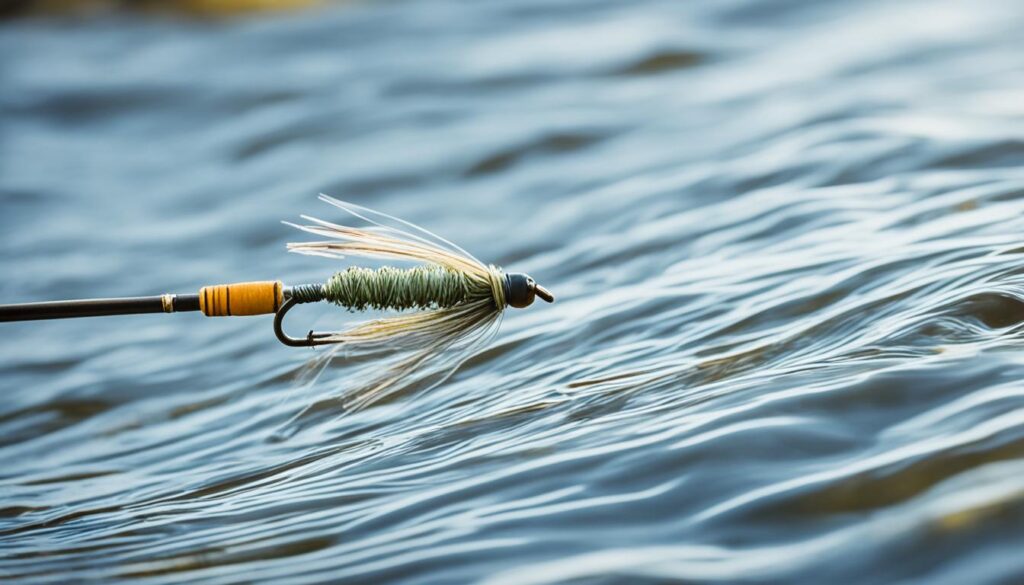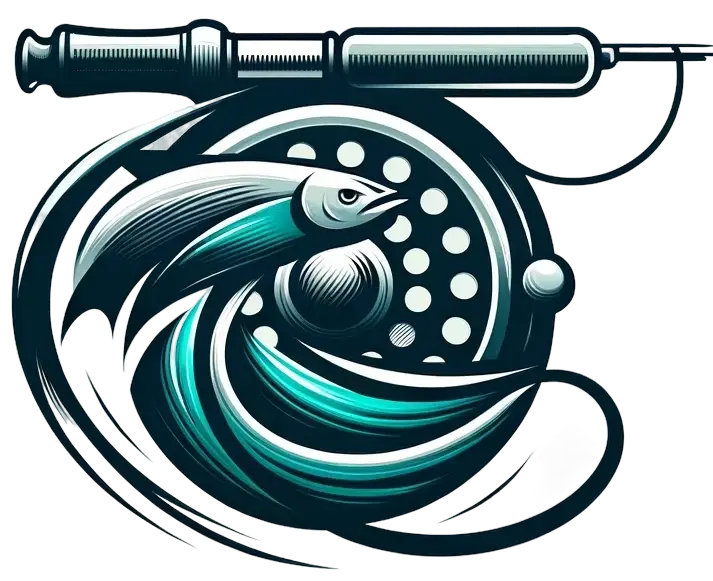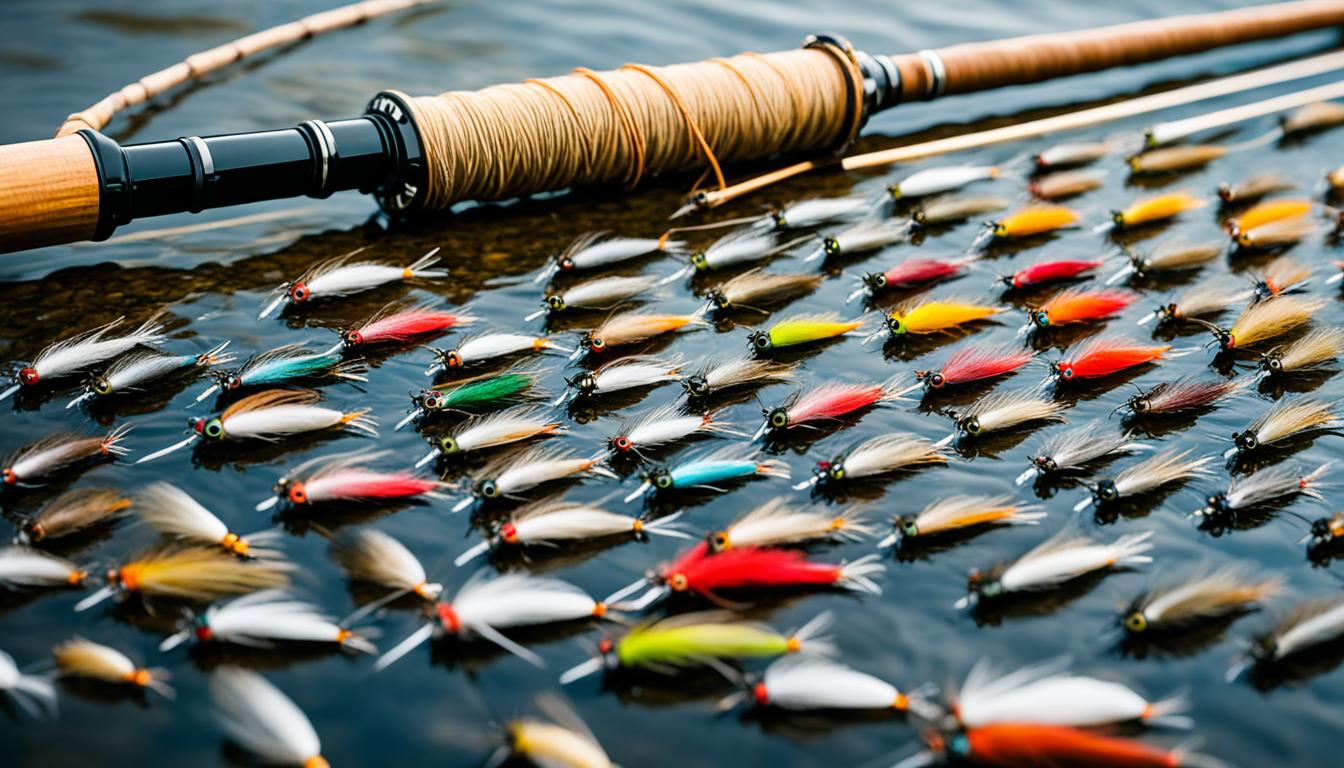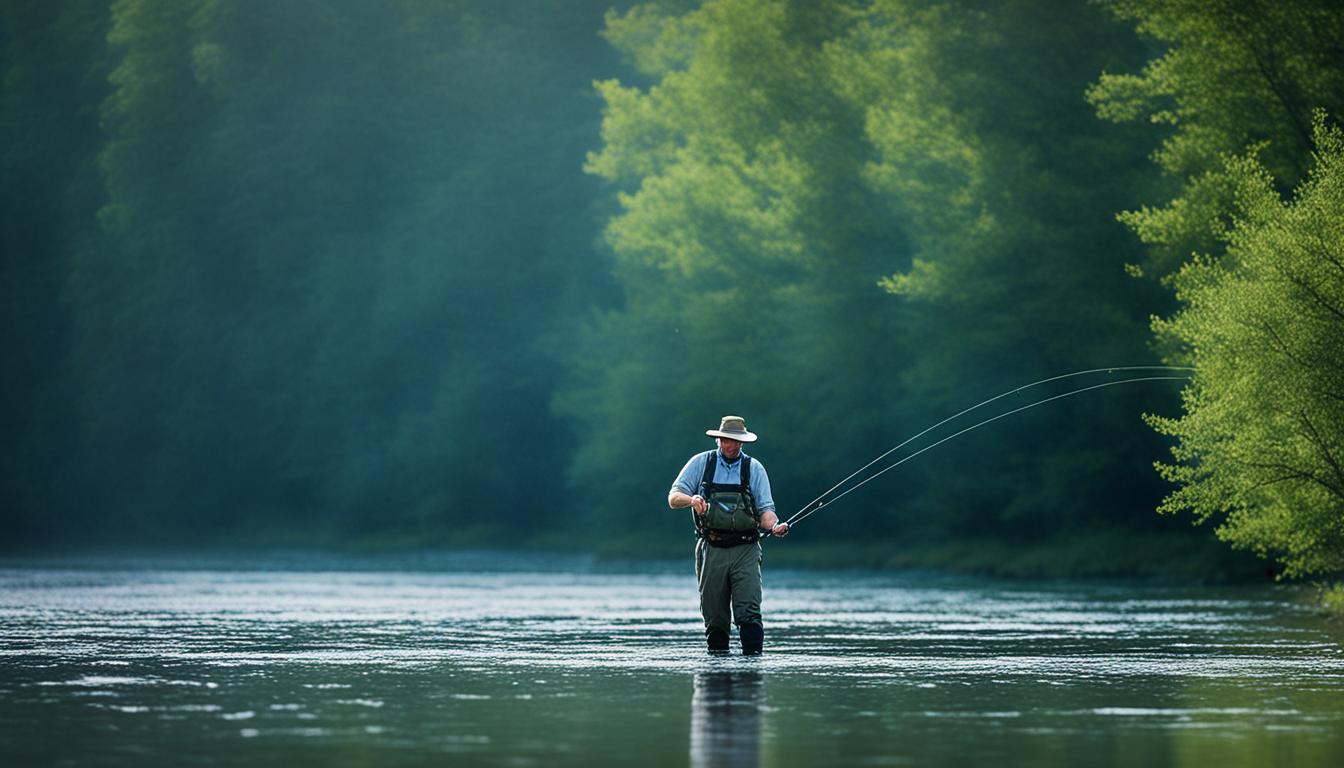Soft hackle flies have a long history in the world of fly fishing, dating back to the 1600s in England and Scotland. They were originally known as “spiders” and gained popularity in America in the early 20th century. While nymphs and other modern techniques have dominated in recent years, there has been a resurgence of interest in soft hackles due to their effectiveness and versatility.
Soft hackle fly patterns offer anglers a unique and traditional approach to fly fishing. These flies are known for their simplicity and the beautiful way they move in the water. With their slender bodies and sparse hackles tied just behind the eye, soft hackles imitate a variety of insects and are effective in a wide range of fishing scenarios.
Whether you’re a seasoned angler or new to fly fishing, learning the art of soft hackles can enhance your fishing experience. From fly tying techniques to exploring traditional fly fishing methods, mastering soft hackles can add a versatile and effective technique to your angling repertoire.
At *insert brand name*, we understand the importance of honing your skills and embracing the rich history of fly fishing. That’s why we offer comprehensive tutorials and resources on soft hackles, designed to help anglers of all levels improve their techniques and find success on the water. Join us as we dive into the art of soft hackles and discover the beauty and effectiveness of these timeless flies.
Key Takeaways:
- Soft hackles have a long history in fly fishing and have recently gained popularity due to their effectiveness and versatility.
- Soft hackle fly patterns imitate a variety of insects and can be used in different fishing scenarios.
- By mastering the art of soft hackles, anglers can add a valuable technique to their angling repertoire.
- *insert brand name* offers tutorials and resources to help anglers improve their soft hackle tying and fishing techniques.
- Join us as we explore the beauty and effectiveness of soft hackles in fly fishing.
The History of Soft Hackles and Wet Flies
Soft hackles and wet flies have a rich history in fly fishing. These time-tested techniques have been used for centuries and continue to capture the imagination of anglers around the world.
In America, soft hackles and wet flies gained popularity thanks to the efforts of influential anglers like Ray Bergman and Sylvester Nemes. Bergman, in his seminal book “Trout,” showcased the beauty and variety of wet fly patterns, opening the door for anglers to explore these traditional techniques.
“Wet flies have an almost magical quality, and their efficacy on trout streams cannot be denied.”
Sylvester Nemes, an expert in soft hackles, further championed the art through his books and teachings. His meticulous exploration of soft hackle fly construction and fishing techniques ensured that these flies remained relevant and celebrated in the world of fly fishing.
While nymph fishing has dominated the fly angling scene in recent decades, there has been a resurgence of interest in soft hackles and wet flies. Anglers are rediscovering the allure of these traditional techniques, drawn to their effectiveness, simplicity, and the connection they provide with the rich history of fly fishing.
Soft hackles and wet flies offer a sense of relaxation and enjoyment that can be overshadowed by the more intense techniques of modern fly fishing. They embody the spirit of angling and allow us to tap into the timeless traditions of our sport.
Notable Figures in the History of Soft Hackles and Wet Flies
| Name | Contribution |
|---|---|
| Ray Bergman | Popularized wet flies through his book “Trout” and showcased their beauty and variety. |
| Sylvester Nemes | Championed soft hackles and kept the tradition alive through his books and teachings on fly construction and fishing techniques. |
Fishing Techniques with Soft Hackles
Soft hackles are incredibly versatile flies that can be fished in a variety of ways, depending on the conditions and angler preferences. In this section, we’ll explore some effective fly fishing techniques using soft hackles and how to maximize their effectiveness in different situations.
Floating Fly Line and Surface Presentations
One popular technique for fishing soft hackles is using a floating fly line and presenting the fly just under the surface. This method is especially effective when fish are actively feeding near the top of the water column. To make the soft hackle ride in the film like a dry fly or emerger, apply a touch of floatant to the fly. This allows the fly to imitate the natural movements of insects hatching on the water’s surface, enticing trout to rise and strike.
Sink Tip Lines for Deep Fishing
When trout are holding in deeper waters, using a sink tip line can be advantageous. The sink tip allows the soft hackle to be taken down to the fish’s level, increasing the chances of enticing a strike. By adjusting the sink rate of the line, anglers can effectively target different depths. This technique is especially useful when fishing in streams or rivers with deep pockets or runs where trout are holding near the bottom.
Euro-Nymphing Techniques
Euro-nymphing is a highly effective technique for fishing soft hackles in rivers and streams with strong currents.
Euro-nymphing, also known as tight-line nymphing, is a popular technique among fly anglers, and soft hackles can be effectively used in this method. With Euro-nymphing, the angler uses a longer, heavier rod and eliminates the need for an indicator. The goal is to maintain direct contact with the fly by keeping the line tight. By utilizing a combination of weighted flies and the controlled drift of the rig, anglers can effectively present soft hackles in the water column, targeting specific areas where trout are likely to be feeding.
Mid-Depth Fishing with Heavy Fly Rigs
In situations where a sink tip line is unavailable, anglers can still effectively fish soft hackles at mid-depth by using a heavy fly rig. This involves tying a heavy fly at the end of the tippet and attaching the soft hackle off the bend of the fly. The weight of the heavy fly helps in getting the soft hackle down to the desired depth, allowing anglers to fish the flies effectively in areas where trout may be holding closer to the bottom.
Overall, the versatility and effectiveness of soft hackles make them a valuable tool in a fly angler’s arsenal. Whether you choose to present them just under the surface with a floating fly line or fish them at varying depths using sink tip lines or Euro-nymphing techniques, soft hackles can imitate a variety of insects and entice strikes from trout.
Understanding Wet Flies and Soft Hackles
When it comes to the world of fly fishing, wet flies and soft hackles are terms that often get tossed around interchangeably. While they share similarities, there are subtle differences between the two that can impact their construction and effectiveness on the water. To truly master the art of these fly patterns, it’s important to understand their unique characteristics and hackling styles.
Both wet flies and soft hackles utilize hackle feathers in their construction. However, the way these feathers are wrapped and the resulting fly behavior set them apart.
Wet flies typically have wider profiles, with hackle fibers wrapped farther back on the hook to mimic legs. These flies often imitate drowned insects or emergers, and their design allows for subtle movement and a convincing presentation in the water. Wet flies are versatile and can be fished in various depths and water conditions.
On the other hand, soft hackles have a more slender body and the hackle is tied sparsely just behind the eye, standing up at a near 90-degree angle. This unique hackling style allows the fly to pulsate and come alive underwater, mimicking the movement of an insect in its natural environment. The hackle fibers create an enticing action that can trigger strikes from even the most selective trout.
While the distinction between wet flies and soft hackles may seem subtle, understanding the different hackling styles can help anglers choose the right fly for specific fishing situations. Whether you’re targeting emerging insects near the surface or presenting a drowned insect in the depths, knowing the nuances of wet flies and soft hackles can greatly increase your chances of success on the water.
So next time you’re preparing your fly box for a fishing trip, consider the different hackling styles of wet flies and soft hackles. By having a variety of patterns that mimic the behavior and movement of different insects in your arsenal, you’ll be well-equipped to adapt to changing conditions and fool even the most discerning fish.
Choosing and Fishing Soft Hackles
When it comes to fishing with soft hackles, the options are abundant. Different soft hackle patterns can imitate various insects, allowing anglers to experiment with colors, sizes, and profiles to match the hatch and entice fish. The key to success lies in selecting the right fly for the circumstances.
One effective technique for fishing soft hackles is swinging them in the current. By casting across the stream and allowing the fly to drift downstream in a controlled arc, anglers can imitate the natural movement of an emerging insect. The hackle fibers undulate enticingly, mimicking the struggling insect and triggering a predatory response from fish.
Swinging soft hackles is a dynamic and exciting way to fish. The gentle rhythm of casting and the anticipation of a strike make it a favorite technique among many anglers.
Another technique to consider when fishing with soft hackles is dead drifting. This involves presenting the fly near the stream bottom and allowing it to drift naturally with the current. The soft hackle, with its slender body and sparse hackle, imitates a drowned or struggling insect that fish find irresistible. By adjusting the weight of the fly and the depth at which it is presented, anglers can target different water columns and increase their chances of success.
Whether swinging soft hackles or dead drifting them, it’s important to pay attention to the presentation and maintain a natural drift. Adjusting the speed of the retrieve or using mends to control the fly’s movement can make a significant difference in enticing strikes.
Overall, the versatility of soft hackles makes them a valuable addition to any angler’s fly selection. Their ability to imitate a wide range of insects and their adaptability to different fishing techniques make them effective in various fishing scenarios. By mastering the art of fishing with soft hackles, anglers can increase their chances of success and fully enjoy the experience on the water.

Image: Swinging soft hackles in the current can mimic the movement of hatching insects and entice fish to strike. Source: angler.com
Conclusion
The art of soft hackles is an invaluable and enduring technique in the world of fly fishing. In recent years, as nymphs and other modern techniques have dominated the angling scene, there has been a resurging interest in the traditional techniques of soft hackles. The relaxation and versatility of soft hackles have captivated anglers, offering an enjoyable and effective way to connect with the history and tradition of fly fishing.
By mastering the art of soft hackles, anglers can enhance their fishing repertoire. Whether you prefer swinging the flies in the current or dead drifting them near the bottom, soft hackles provide endless opportunities for success on the water. These versatile flies can imitate a variety of insects, making them a valuable tool in any angler’s arsenal.
So, next time you head out for a day of fly fishing, don’t forget to add a selection of soft hackles to your fly box. Explore the beauty and intricacy of fly tying, embrace the relaxation of traditional techniques, and experience the thrill of connecting with fish using soft hackle flies. The art of soft hackles is an art worth mastering, and it promises to enhance your fly fishing adventures in ways you never imagined.
FAQ
What are soft hackles?
Soft hackles are a type of fly used in fly fishing. They are typically tied with feathers that create a slender body and hackle fibers that stand up at a 90-degree angle. They imitate various insects and can be fished at different depths.
How are soft hackles different from wet flies?
While wet flies and soft hackles are often used interchangeably, there are subtle differences between the two. Wet flies have a wider profile and the hackle fibers are wrapped farther back on the hook to resemble legs. Soft hackles, on the other hand, have a slender body and sparse hackle tied just behind the eye, creating movement in the water.
How do I fish with soft hackles?
Soft hackles can be fished in various ways depending on the conditions and angler preference. Most anglers use a floating fly line and present the soft hackle just under the surface. They can also be swung in the current or dead drifted near the stream bottom to imitate different insect behaviors.
How do I choose the right soft hackle?
Choosing the right soft hackle depends on the insects you are trying to imitate or the fishing conditions. Different patterns imitate different insects, so it’s important to choose the right color, size, and profile. Anglers can experiment to match the hatch and entice fish.
Are soft hackles effective in all fishing scenarios?
Soft hackles are versatile and can be effective in a wide range of fishing scenarios. They can be used in both stillwater and moving water fishing, making them a valuable tool in a fly angler’s arsenal. The key is to understand the behavior of the insects you are imitating and choose the right presentation technique.




